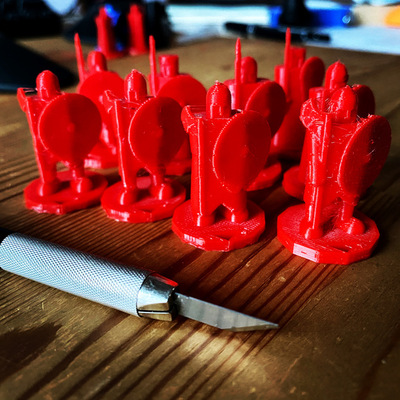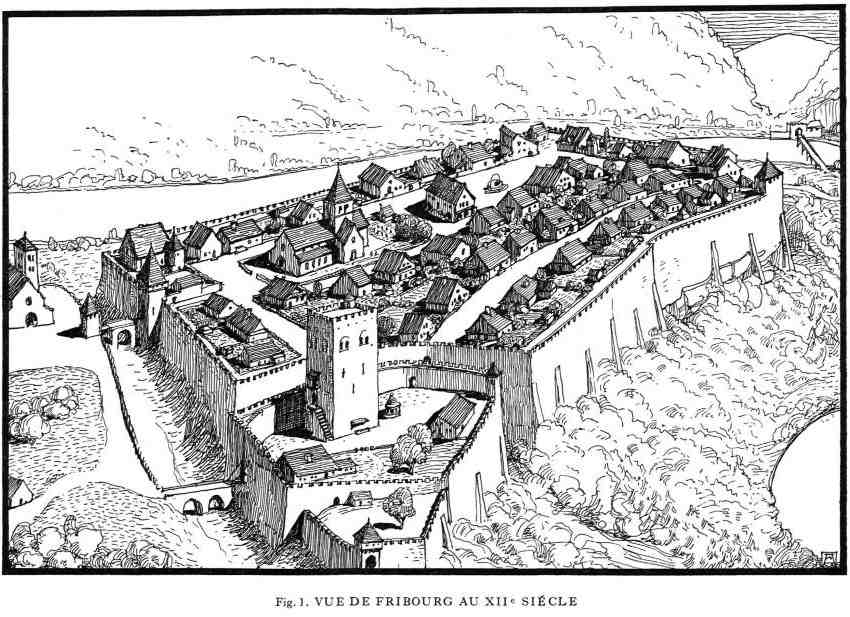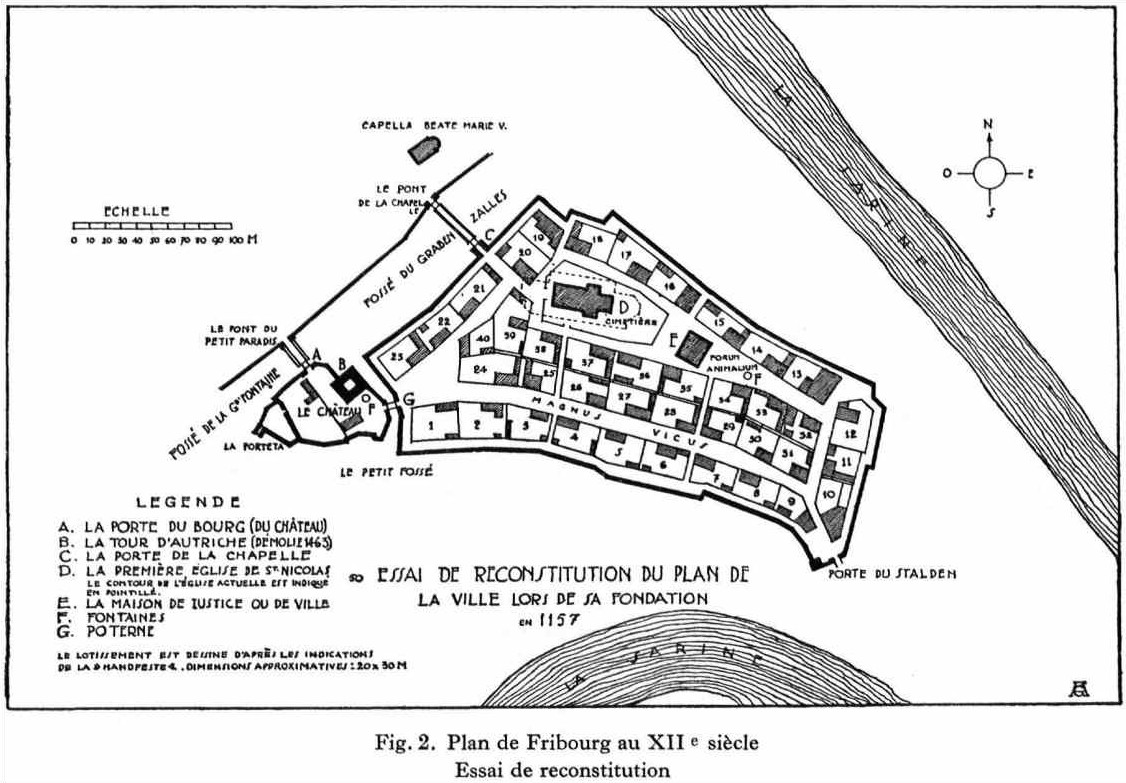
|
Freiburg im Uechtland |
| 2022-08-12 |
Freiburg im Uechtland

I had this view of the original city in my head for a long time, but I couldn't find it back. I had first glimpsed at it in a history book in primary school and it was just a souvenir. I was happy I could locate it again. Let me give some context for it. It makes for a nice medieval setting.
The illustrations originates in a 1944 article for the Journal of Swiss archeology and art history. The article is in French, although scanned and kept by the ETH Zürich (in German).
The view above reconstitutes the small city of Fribourg as it was in the twelfth century, after its foundation in 1157. It's built in a meander of the Sarine (Saane in German). This river has high cliffs, it's not always easy to find places where the slopes on both sides are gentle (and the river in between allows fording / bridging).
The illustration shows how the city nests in its meander and how it protects the access to the bridge seen top right. There were two or three such fording places on the Sarine, there were used by the roman road system. Fribourg was built to secure one of them.
It was built by Berthold IV, duke of Zaehringen. He was rector of the two Burgundies and Fribourg was on his line of communication with his core domains on the Alemannic side.
During the whole middle-ages, roads were not very secure, armed bands roamed the country, war was everywhere in a latent or open state. Walled cities were havens where one felt in a relative safety. Security, ease of defense were the first factors when choosing the location of a city. One looked for places that were difficult to access and naturally defensible: a hilltop, a promontory, the loop of a river.
The article indicates that once Berthold IV chose the location. He financed the building of the first rampart, the castle, the church and the house of justice. The burghers were then expected to pay for the houses, the maintenance of the fortifications and their extensions.
The castle and the rampart were probably built quickly. One must not believe the reports of slow building processes during the middle ages. This opinion comes from numerous examples of cathedrals built over centuries and that sometimes even reached us incomplete. Emulation lead burghers of the thirteenth century to build huge churches beyond their means. Such constructions were done in stages, funded through collections, donations, and legacies, with very irregular inputs. Wars and public misfortunes often delayed the construction process and curbed the enthusiasm.
It was very different when a powerful lord initiated the building of a castle or a fortification he deemed necessary. The construction was done in a record time, even to our modern standards. Skilled builders were many in the twelfth and thirteenth centuries, countless churches and castles bear witness to this. We can therefore assume a fairly short time, 3 to 5 years for the construction, in Fribourg, of the ramparts and the castle, and even of the first church. (...)
Berthold IV probably relied on one of the many mason and stonecutter teams who criss-crossed the whole of Europe and were busy building castles, monasteries, and cathedrals. It is possible and even probable that he had brought from Germany his own military architects for the fortifications. What we know of the castle, consisting essentially of a large square tower, the absence of any tower for the first rampart, confirm this hypothesis. On the other hand, the proximity of Hauterive, the cistercian convent founded shortly before in 1138 may have influenced the building of the first church as the church of Hauterive was being built at the same time. We can therefore assume that part of the masons worked on the two neighboring sites.

The article has a few more lines about the builders:
Masons and stonecutters were free men, "free masons". The labourers, on the other hand, were recruited by corvées, among the serfs attached to the surrounding domains whose lords were the vassals fo the dukes of Zaehringen.
The castle and the city have then to be manned:
After its construction, the castle received a garrison of men-at-arms in the pay of Berthold IV. It is not known if the chatelain was at the same time the avoyer of the city. He was definitely the military leader responsible for the defense of the castle and the city.
Once the enclosure was completed, the city had to be populated. To recruit settlers, the lord used a simple mean, he granted freedoms to the inhabitants. The name of Freiburg (Free Town), recalls this fact and acted as an advertisement. The Freiburg charter (Handfeste) was probably common to the other towns of the Zaehringen. We have a copy of the thirteenth century, it fixed the rights of the citizens, their duties towards the lord and contained a number of police prescriptions. It also determined the sizes of the housing lots.
The House of Zaehringen soon became extinct, the city then became the property of the House of Kyburg and then of the House of Hapsburg, but not for too long. The castle and its square tower were demolished around 1463, as the city was growing beyond its initial rampart.
Let me zoom back on the castle:
We saw that the twelfth century castle was essentialy composed of a big tower and a rampart. It was generally the only constructions in stone. The dungeon was in Switzerland and in Germany always a square building, or, rarely, rectangular. Round towers, better for the defense, but more difficult to build, start to be built in Switzerland only during the thirteenth century.
The square tower was destroyed, but there still exist, 10 kilometers north of Fribourg, a twelfth century tower, the dungeon of Petit-Vivy that can give us a good feeling for what were such towers.
A river, a point of passage over it, a castle and its city.
